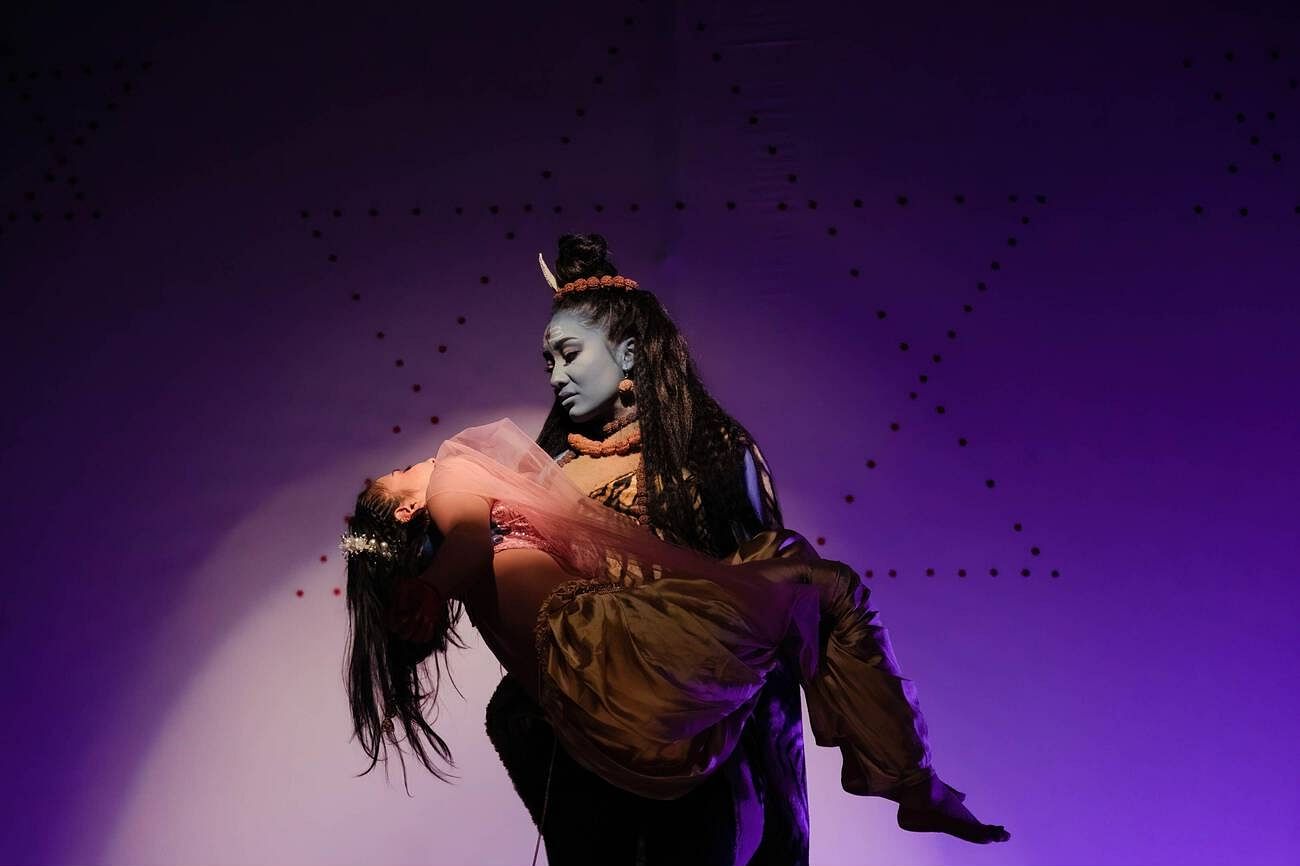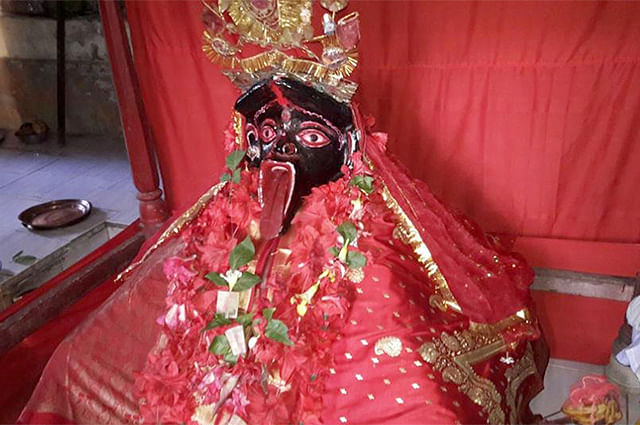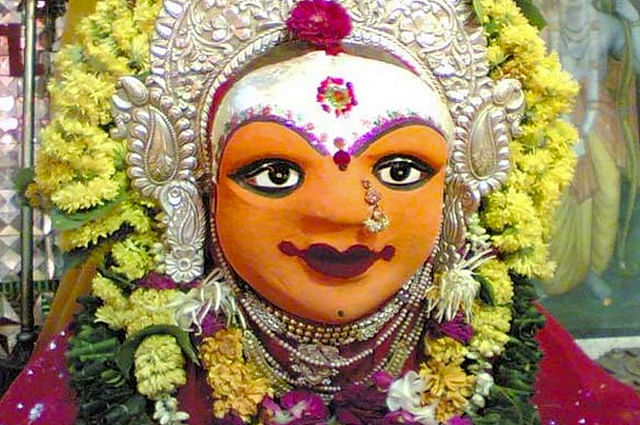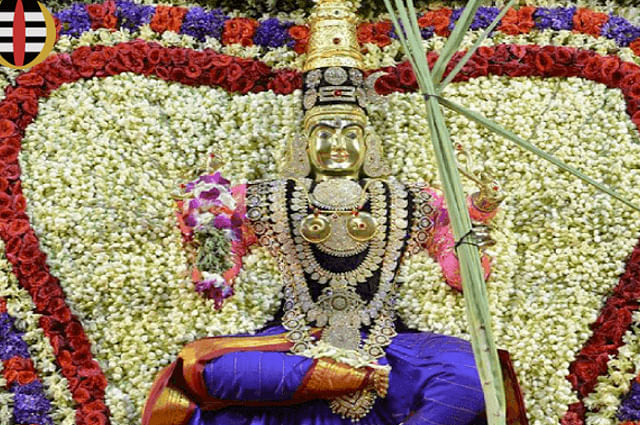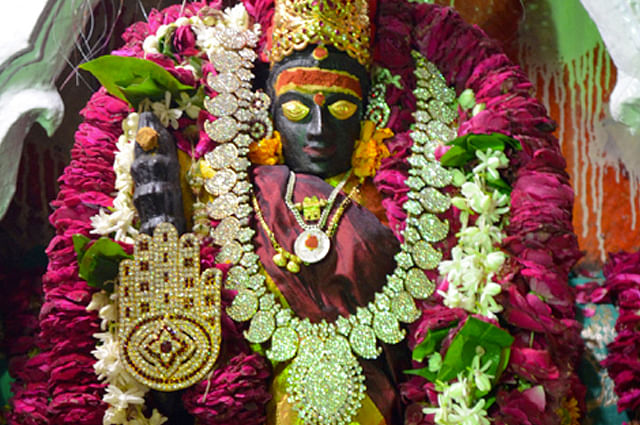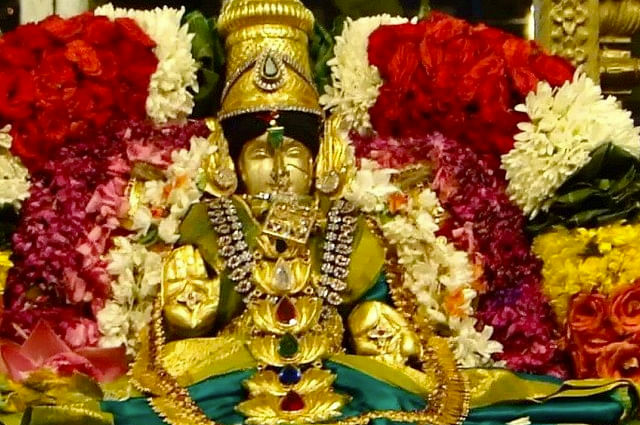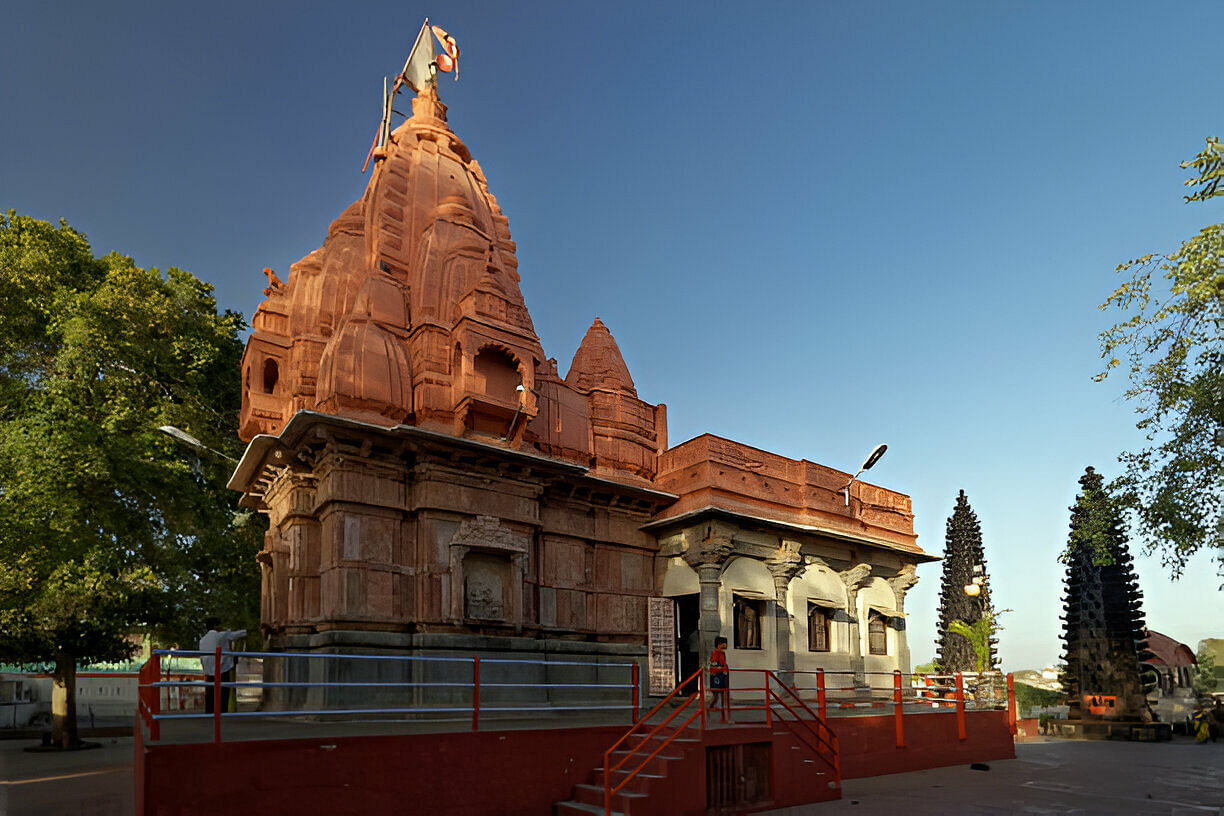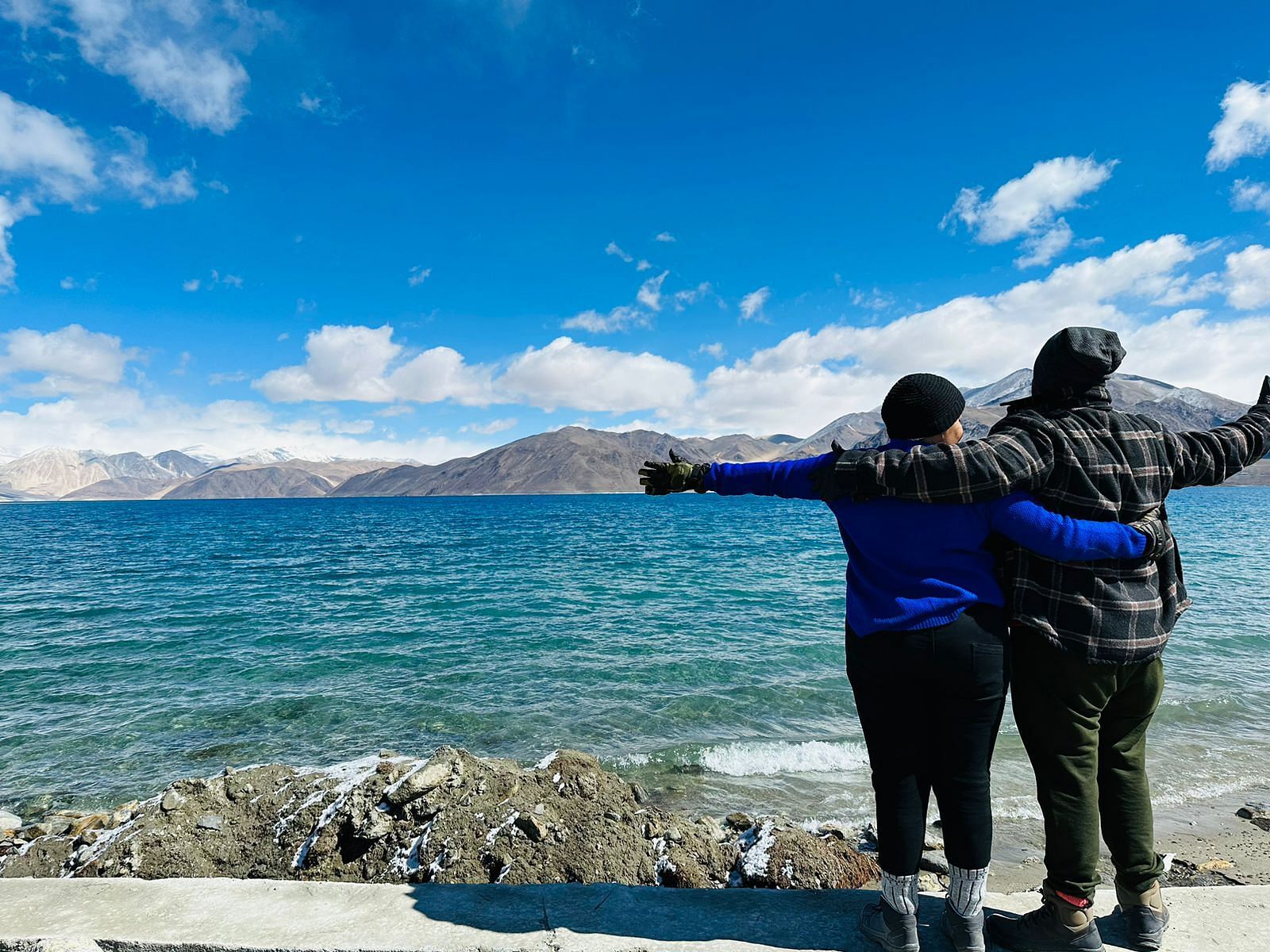I grew up listening to my aunt talk about the famous Shaktipeeths in India with such passion that I couldn’t help but get curious. ‘There’s a deep energy there,’ she’d say, her voice full of reverence, as though she had already visited them all. I’d smile and nod, but deep inside, I had no clue what she was talking about.Back then, I was just a kid, more excited about which new gadget Doraemon would pull out of his pocket than about stories filled with divine energy, love, and grief. The tales of ancient temples and powerful deities were far from my mind. But as I grew up, curiosity took over. I began to wonder, what exactly are the Shaktipeeths? What makes these sacred sites so revered, and what stories lie hidden within them?
When I finally heard the complete story and understood the importance of Shaktipeeths, I was left in deep thought. It stirred something within me, and I couldn’t help but feel a profound connection. Now, I know why these places are so special and why my heart feels heavy when I think about them. Join me as we dive into the heart of the famous Shaktipeeths in India, uncover their mysteries and power, and explore the stories that make them sacred—and how Shaktipeeths were formed.
Suggested Read: Pilgrimage Road Trips in India: Top 15 Pilgrimage Routes for 2024!
How Tragedy Gave Birth to the Shaktipeeths
Have you ever heard of a tragedy that was so powerful, it created something sacred? Well, that’s how Shaktipeeths were formed —through a story of love, grief, and a fiery sacrifice that surpassed time. The history behind the Shaktipeeths is not just a tale of divine anger and grief, but also one of eternal love and sacrifice.It all started with a king named Raja Daksha, who was fiercely opposed to his daughter Sati’s marriage to Lord Shiva. Despite his objections, Sati and Lord Shiva’s love was strong, and they married. But, Raja Daksha held a deep grudge against Lord Shiva, and even after the wedding, he made it clear that he didn’t want anything to do with his son-in-law.The Pooja That Ignited a Storm
One day, Raja Daksha organized a grand Pooja (ceremony) at his palace and invited every God and Goddess—except Lord Shiva. He knew that Sati would want to attend, but he planned to insult Lord Shiva by not inviting him. Sati was stuck in a dilemma: if she went with Shiva, she would be seen as disrespecting him, but if she went alone, it would be seen as a disrespect to her husband. She chose to go, despite Lord Shiva’s protests, hoping to avoid the tension.When Sati arrived at the Pooja, she realized she had walked right into her father’s trap. Every God and Goddess had their better halves by their side, and Sati was alone. It was clear that her father was trying to humiliate her by making her a spectacle. But what could she do? She decided she would leave after the ceremony and avoid further humiliation.
The Insult That Led to Sacrifice
But things took a darker turn. During the Pooja, the priest asked Sati to invite her husband, as the ceremony required both the husband and wife to be present. This was Daksha’s final insult. Sati couldn’t take it anymore. She stood up, confronting the entire gathering and condemning the insult. In a moment of intense grief and defiance, Sati leapt into the Yagya fire, ending her own life to protect her dignity and the honor of her beloved Lord Shiva.Suggested Read: Exploring 10 Maha Shivratri Temples: Sacred Sites Of Lord Shiva
Lord Shiva’s Wrath and Grief
When Lord Shiva learned of Sati’s death, his heart broke. With fiery rage and intense sorrow, he descended from Kailash and rushed to Daksha’s place. But it was too late—Sati was gone. Shiva’s fury was uncontrollable. Seeing this, Lord Vishnu intervened, trying to pacify Shiva and prevent more destruction. But Shiva, overwhelmed by grief, didn’t listen.In the chaos that followed, Lord Vishnu used his Sudarshan Chakra, which cut Sati’s body into 52 pieces. These pieces fell across the land and became sacred places—the 51 Shaktipeeths, each one representing a part of Sati’s divine body. The final piece, her heart, remained with Lord Shiva, who merged it with his own, declaring that Shiva is incomplete without Shakti.
Where Did the 52nd Piece Go?
After all the pieces of Sati’s body were scattered, one piece remained – her heart. Lord Shiva took it and placed it in his own chest, saying, “Shiv is incomplete without his Shakti.” This showed how deeply connected they were.As for the 52nd piece, it wasn’t like the others that became Shaktipeeths. This heart stayed with Shiva, showing their unbreakable bond. It is believed that if you can’t visit all the Shaktipeeths, worshiping Lord Shiva with all your heart can give you the same blessings. Through Shiva’s heart, you can connect with the power of all the famous Shaktipeeths in India.
Suggested Read: Temples of Hampi: Unveil The Secrets Behind Their Walls
Importance of Shaktipeeths
Shaktipeeths, meaning “seats of power,” hold a special place in Hindu spirituality. These sacred sites are considered the ultimate abodes of Goddess Durga’s divine energy. For devotees, Shaktipeeths are not just temples—they are centers of faith, power, and blessings that have been revered for centuries.The Shaktipeeths symbolize the presence of feminine energy, or Shakti, which balances the cosmos. Worshipping at these 51 holy sites is believed to invoke blessings, heal hardships, and strengthen one’s spiritual journey. Need guidance? A visit here is like dialing directly to the divine.Cultural and Historical Value
Each Shaktipeeth is deeply rooted in the history behind the Shaktipeeth. These temples are tied to ancient tales of devotion and divine intervention, preserving India’s rich cultural heritage. They are also architectural marvels, showcasing intricate designs and historical artistry that reflect their importance through the ages.A Source of Universal Balance
The Shaktipeeths highlight the balance between masculine and feminine energies. Lord Shiva and Goddess Durga are often worshipped together, emphasizing the idea that both energies must coexist harmoniously. This belief adds to the story of Shaktipeeth, making them a reminder of universal balance and the strength of unity.Why Shaktipeeths Still Amaze Us!
Shaktipeeths are a perfect mix of mythology, history, and spirituality. These temples not only carry the divine story of Shaktipeeth but also feature beautiful architecture, ancient rituals, and cultural traditions that have been carefully preserved over time. From vibrant fairs to soothing chants and peaceful surroundings, visiting these sites is truly a life-changing experience.Whether you’re searching for spiritual peace or intrigued by ancient tales, exploring famous Shaktipeeths in India feels like uncovering a magical piece of India’s rich heritage. Their deep significance and timeless charm ensure they always leave visitors in awe!
Navratri, a nine-day celebration, honors Goddess Durga’s victory over the demon Mahishasura. For nine days, she battled him in different forms and finally defeated him on Ashtami with immense anger.
Each of the 9 forms of Nav Durga and Nav Gauri connects back to the 51 sacred pieces of Goddess Sati that fell, as told in the legend. These places became revered worship points, each celebrated for its unique qualities, inspiring devotion to this day.
Suggested Read: 12 Jyotirlingas In India To Visit In 2025
Here’s a list of Shaktipeeths, where mythology, spirituality, and divine energy converge at each revered location, creating a truly divine experience!Famous Shaktipeeths in India
If you’re wondering how many Shaktipeeths are in India, India is home to 51 Shaktipeeths, spread across various regions and holding great spiritual significance. These are some of the famous Shaktipeeths in India:- Kamakhya Temple, Guwahati, Assam
- Kalika, Kalighat Kali Temple, West Bengal
- Mahamaya, Amarnath, Jammu and Kashmir
- Phullara, Attahasa, West Bengal
- Bahula, Bardhaman, West Bengal
- Mahishmardini, Bakreshwar, Siuri Town
- Avanti, Bairavparvat Ujjain, Madhya Pradesh
- Jwala, Kangra, Himachal Pradesh
- Kali Kalmadhav, Amarkantak, Madhya Pradesh
- Devgarbha/ Kankleshwari, Birbhum, West Bengal
- Sravani, Kanya Kumari, Tamil Nadu
- Chamundeshwari, Chamundi Hills, Mysore
- Vimla, Murshidabad, West Bengal
- Kumara Shakti, Anandamayee Temple, West Bengal
- Shakti Bhraamari, Ratnavali, West Bengal
- Gayatri Manibandh, Pushkar, Rajasthan
- Varahi, Panch Sagar, Uttar Pradesh
- Chandrabhaga, Junagarh, Gujarat
- Lalita, Prayag
- Savitri, Bhadra Kali, Haryana
- Maihar, Shivani, Satna, Madhya Pradesh
- Nandini, Nadikeshwari, Birbhum, West Bengal
- Sarvashail, Rakini, Kotilingeshwar
- Narmada Shondesh, Amarkantak, Madhya Pradesh
- Tripura Sundari, Udaipur, Tripura
- Mangal Chandika, Ujjain, Madhya Pradesh
- Vishalakshi, Varanasi, Uttar Pradesh
- Uma, Vrindavan, Bhooteshwar, Uttar Pradesh
- Tripurmalini, Jalandhar, Punjab
- Amba, Amabaji, Guajarat
- Jai Durga, Deoghar, Jharkhand
- Danteshwari, Chhattisgarh
- Nabi Gaya, Biraj, Jaipur
- Devi Narayani, Suchindram, Tamil Nadu
- Kapalini Vibhash, Medinipur, West Bengal
- Ambika, Bharatpur, Rajasthan
Suggested Read: 10 Oldest Temples in India: Timeless Heritage and Ancient Architecture
Shaktipeeths Outside India
You might be wondering, how many Shaktipeeths are out of India? These sacred sites are spread across neighboring countries like Bangladesh, Nepal, and Pakistan, offering a spiritual connection that transcends borders. Here’s a Shaktipeeth name list that are outside India:- Aparna, Bhavanipur, Bangladesh
- Gandaki Chandi, Chandi River
- Bhamari, Janaasthaan
- Kottari, Hinglaj, Karachi, Pakistan
- Jayanti, Bourbhag Village, Bangladesh
- Yogeshwari, Khulna
- Shakti Dakshayani, Mansarovar
- Uma, Mithila, India-Nepal border
- Indraksh, Nainativu, Manipallavam
- Mahashira, Guhyeshwari, Pashupatinath Temple
- Bhawani, Chandranath Hills, Bangladesh
- Sundari, Sri Sailam, Bangladesh
- Maha Lakshmi, Sri Shail, Bangladesh
- Sugandha, Shikarpur, Bangladesh
- Mahish Mardini, Karachi, Pakistan





